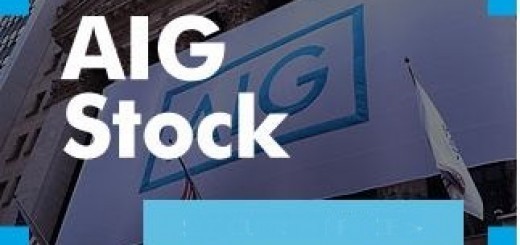I m Selling AIG Stock and Buying Warrants (AIG)
Post on: 8 Июнь, 2015 No Comment

My Special Situations portfolio has had a nice run in AIG ( NYSE: AIG ). and now I’ve decided to leverage that bet. So I’m selling my stake in AIG – now up about 43% — and moving half the proceeds into AIG warrants (AIG-WT). The warrants offer substantial upside on not-too-aggressive assumptions about AIG’s business performance.
A bumpy fourth quarter
AIG continues to improve its operations and create value for shareholders, though the fourth quarter looked a bit messier than I would have liked. The fourth quarter saw the accident year combined ratio deteriorate. While bothersome, this does not worry me. The focus is long-term profitable underwriting, and management is still focused on that goal, and the direction over the past few years is clearly better.
AIG is also creating value in other ways. It’s in the process of completing the sale of its aircraft leasing unit, and it’s been quite aggressive buying back its own shares at a price well below book value. That’s immediately accretive to per-share book value, and I love to see that kind of capital allocation move. The company still has another $1.4 billion authorized for buybacks — good for a bit less than 2% of the shares outstanding. The company also bumped its dividend by 25%.
Why warrants?
Currently trading at just over 70% of book value, AIG offers investors the opportunity to profit from multiple expansion as well as growth in book value. So why warrants? The short answer is that warrants give us leveraged exposure to any price gain in AIG common stock. The warrants expire in January 2021, and you can think about them like long-term call options. Like long-term calls, warrants tend to be ridiculously mispriced, so they’re a good place to hunt for value. The warrants’ strike price is $45, and they’re currently priced around $19.
In addition, the warrants have anti-dilution provisions, including adjustments if AIG’s annual dividends exceed $0.675 per share. So even the warrants participate a bit in dividends as they grow.
I’ve included two scenarios that show the potential gains from both the stock and warrants assuming a few things. First, I’ve assumed that the warrants bleed time value of about $2 per year. Then I assume that the valuation on AIG stock grows ratably over the seven-year period, about 6 percentage points per year. If AIG moves toward consistently profitable underwriting, I don’t see a valuation at 1 to 1.1 times book value as too aggressive.
In the first scenario, I assume growth in book value per share of 5%, below trailing return on equity. In the second scenario I assume a more aggressive 10% growth in book value per share, echoing management’s target of 10% return on equity, even though management backed off achieving this target by 2015.
The following table shows the potential returns assuming 5% growth in book value per share:














